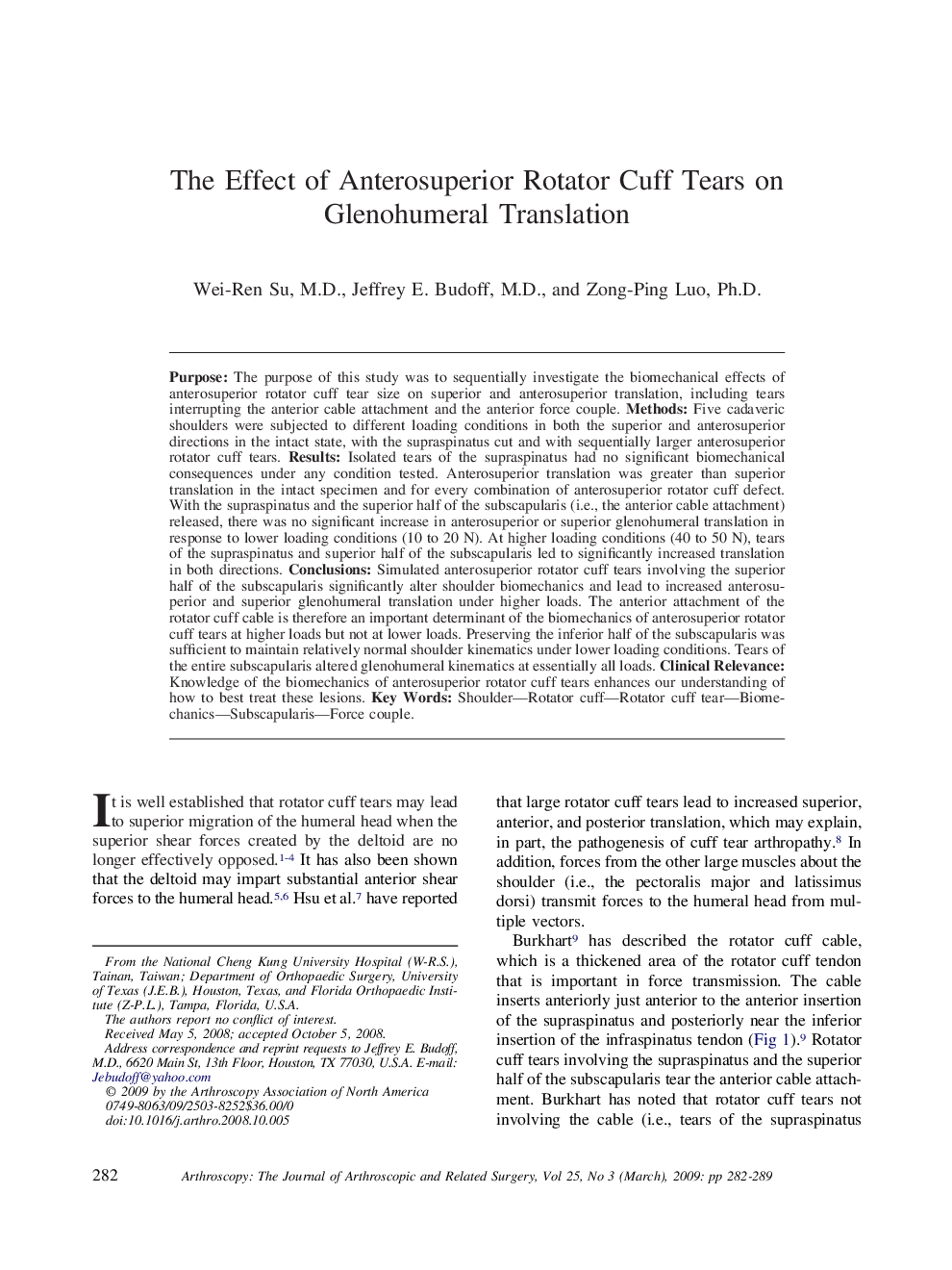| Article ID | Journal | Published Year | Pages | File Type |
|---|---|---|---|---|
| 4046614 | Arthroscopy: The Journal of Arthroscopic & Related Surgery | 2009 | 8 Pages |
PurposeThe purpose of this study was to sequentially investigate the biomechanical effects of anterosuperior rotator cuff tear size on superior and anterosuperior translation, including tears interrupting the anterior cable attachment and the anterior force couple.MethodsFive cadaveric shoulders were subjected to different loading conditions in both the superior and anterosuperior directions in the intact state, with the supraspinatus cut and with sequentially larger anterosuperior rotator cuff tears.ResultsIsolated tears of the supraspinatus had no significant biomechanical consequences under any condition tested. Anterosuperior translation was greater than superior translation in the intact specimen and for every combination of anterosuperior rotator cuff defect. With the supraspinatus and the superior half of the subscapularis (i.e., the anterior cable attachment) released, there was no significant increase in anterosuperior or superior glenohumeral translation in response to lower loading conditions (10 to 20 N). At higher loading conditions (40 to 50 N), tears of the supraspinatus and superior half of the subscapularis led to significantly increased translation in both directions.ConclusionsSimulated anterosuperior rotator cuff tears involving the superior half of the subscapularis significantly alter shoulder biomechanics and lead to increased anterosuperior and superior glenohumeral translation under higher loads. The anterior attachment of the rotator cuff cable is therefore an important determinant of the biomechanics of anterosuperior rotator cuff tears at higher loads but not at lower loads. Preserving the inferior half of the subscapularis was sufficient to maintain relatively normal shoulder kinematics under lower loading conditions. Tears of the entire subscapularis altered glenohumeral kinematics at essentially all loads.Clinical RelevanceKnowledge of the biomechanics of anterosuperior rotator cuff tears enhances our understanding of how to best treat these lesions.
